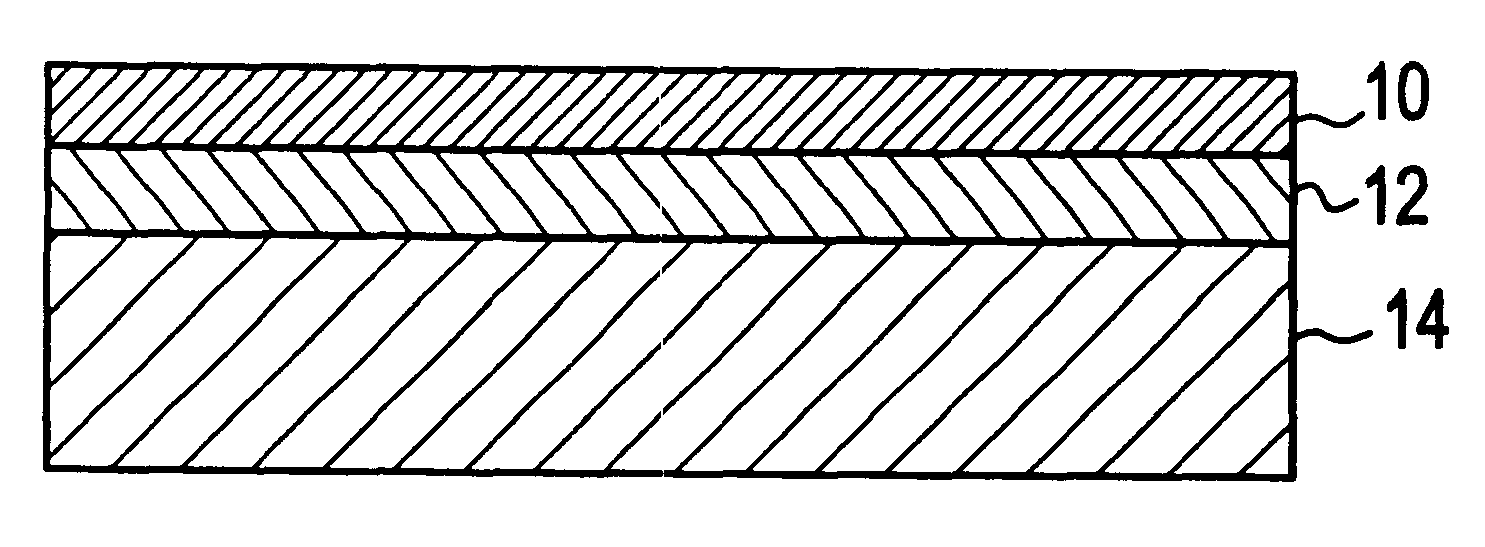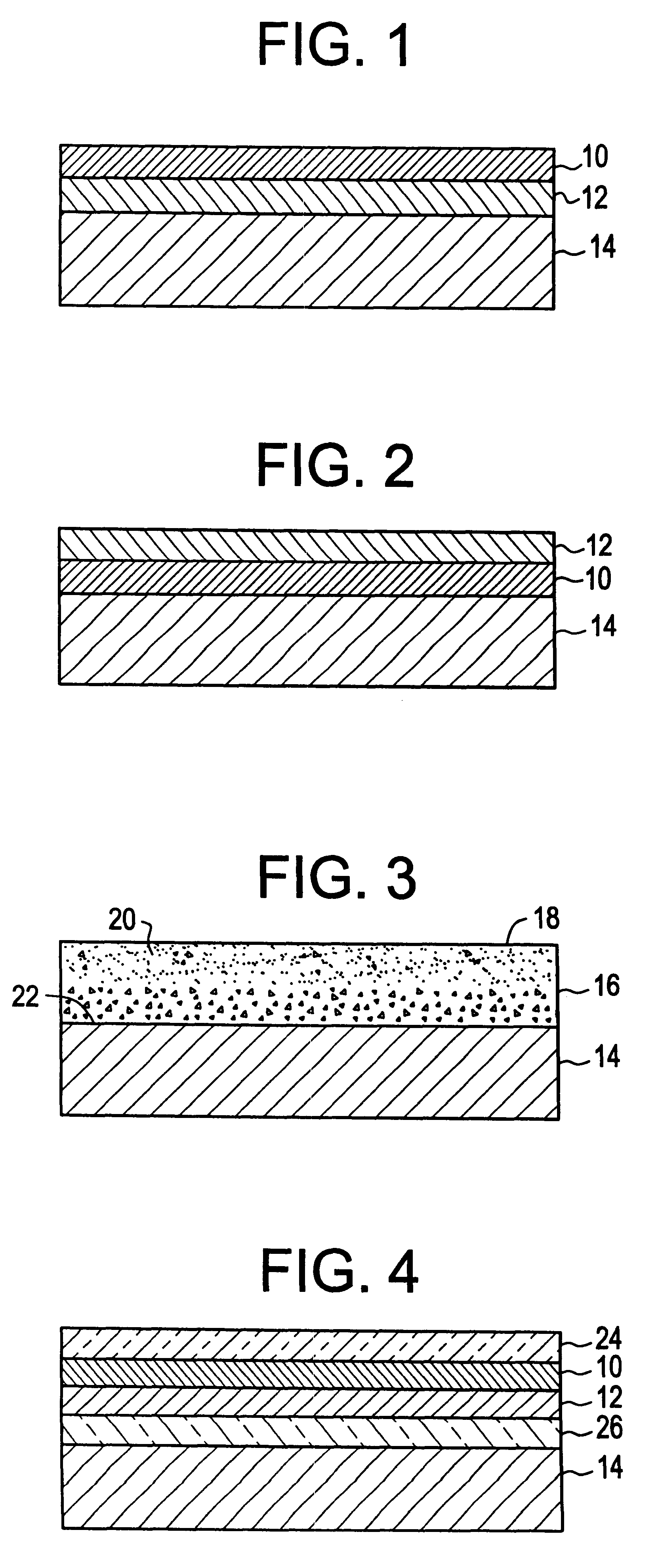Solar control coated glass
a solar control and coating technology, applied in the field of coating glass, can solve the problems of not teaching the process of coating glass articles, the patent does not teach how to produce coated glass articles, and no one system has successfully met all the performance requirements in an economic manner. , to achieve the effect of convenient application
- Summary
- Abstract
- Description
- Claims
- Application Information
AI Technical Summary
Benefits of technology
Problems solved by technology
Method used
Image
Examples
example 40 (table 3)
5.5% SbCl.sub.3
300 / 240 (F / Sb / Glass)
X=9.797
Y=9.404
Z=12.438
x=0.310
y=0.297
L*=36.751
a*=4.624
b*=-3.466
c*=5.778
Solar control properties of glass windows has been evaluated and rated by the United States of America, Environmental Protection Agency using an Energy Star rating system. An Energy Star rating for the Central Region of the United States requires a U-factor rating of 0.40 or lower and a SHGC rating of 0.55 or below. An Energy Star rating for the Southern Region of the United States requires a U-factor rating of 0.75 or lower and a SHGC rating of 0.40 or below. Coated glass having the NIR and Low e coatings of the present invention and when incorporated into windows of conventional design achieve the Energy Star ratings for the Central and / or Southern Region. For example a Vertical slider design window 3 feet wide by 4 feet high and having a frame absorption value of 0.5 as rated by the National Fenestration Rating Council (NFRC) and assembled with coated solar control glass of th...
examples 1 to 30
A 2.2 mm thick glass substrate (soda lime silica), two inches square, was heated on a hot block to 605 to 625.degree. C. The substrate was positioned 25 mm under the center section of a vertical concentric tube coating nozzle. A carrier gas of dry air flowing at a rate of 15 liters per minute (l / min) was heated to 160.degree. C. and passed through a hot wall vertical vaporizer. A liquid coating solution containing .about.95 wt % monobutyltin trichloride and .about.5 wt % antimony trichloride was fed to the vaporizer via a syringe pump at a volume flow designed to give a 0.5 mol % organotin concentration in the gas composition. A quantity of water was also fed into the vaporizer at a flow designed to give a 1.5 mol % water vapor in the gas mixture. The gas mixture was allowed to impinge on the glass substrate at a face velocity of 0.9 m / sec for .about.6.1 seconds resulting in the deposition of a film of antimony doped tin oxide .about.240 nm thick. Immediately following, a second gas...
examples 31 to 38
The procedure of Example 1 was repeated, except that the vapor feed order was reversed. The fluorine doped tin oxide film was deposited first for .about.8 seconds followed by the antimony doped tin oxide film for .about.6 seconds. The resulting film was .about.540 nm thick and composed of a low emissivity layer (TOF) of about 300 nm and a NIR layer (TOSb) of about 240 nm and had a similar appearance and reflected light color (Neutral-blue Color) as the film in example 19. The analysis results appear in Table 2, number 31. The procedure of this example was repeated 7 additional times with concentrations of chemical precursors and deposition times varied in order to produce coated glass samples having different thicknesses for the NIR and low emissivity layers and different dopant concentrations. The results are presented in Table 2.
PUM
| Property | Measurement | Unit |
|---|---|---|
| thickness | aaaaa | aaaaa |
| thickness | aaaaa | aaaaa |
| thickness | aaaaa | aaaaa |
Abstract
Description
Claims
Application Information
 Login to View More
Login to View More - R&D
- Intellectual Property
- Life Sciences
- Materials
- Tech Scout
- Unparalleled Data Quality
- Higher Quality Content
- 60% Fewer Hallucinations
Browse by: Latest US Patents, China's latest patents, Technical Efficacy Thesaurus, Application Domain, Technology Topic, Popular Technical Reports.
© 2025 PatSnap. All rights reserved.Legal|Privacy policy|Modern Slavery Act Transparency Statement|Sitemap|About US| Contact US: help@patsnap.com



